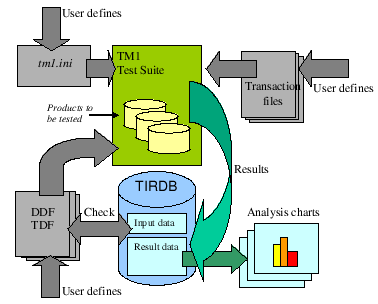Embedded telecom databases get a benchmark of their own
Dec 7, 2004 — by Henry Kingman — from the LinuxDevices Archive — viewsSolid Information Technology has launched a free, open benchmark for databases in telecommunications and other network infrastructure applications. The Telecom One (TM1) benchmark simulates real-world telecom database performance better than TPC (Transaction Processing Performance Council) benchmarks, says Solid, and the company is adovating for an industry consortium to manage TM1.
According to Solid, TPC benchmarks are based on enterprise and e-commerce applications, whereas the TM1 benchmark measures data activity against a model of a typical Home Location Register (HLR). HLRs are databases used in CDMA, TDMA, and GSM mobile networks to identify users, user preferences, services, billing options, and the cell location of specific handsets. Each mobile call requires at least one access to the HLR, Solid says.
Solid says TM1 is based on work done at a TEM (telecom equipment manufacturer), which, in turn, was based on a Master's thesis submitted by Toni Strandell to the University of Helsinki in May of 2003. Strandell's thesis paper was entitled, “Open Source Database Systems: Systems study, Performance and Scalability.”
What's it good for?
Solid says TM1 can be used to make relative comparisons of RDBMS (relational database management systems), operating system, or hardware performance, including version comparisons. And, it can help assist in capacity planning for new applications, Solid says.
How does it work?
According to Solid, TM1 simulates real-world HLR conditions, using an HLR-like schema with four related tables. Seven types of pre-defined transactions are run against the modeled HLR, in proportions typical of real-world HLRs. As in real-world HLRs, 80 percent of queries are read-only, Solid says.

TM1 architecture diagram, showing Database Definition Files (DDF), Test Definition Files (TDF), tm1.ini and transaction files, and the Test Input and Result Database (TIRDB)
The TM1 benchmark produces two kinds of results. It shows the MQTh (maximum qualified throughput) in transactions per second, averaged over the seven transaction types. It also provides response time distributions for each of the transaction types. Together, Solid says, TM1's results provide an estimate of application speed, and highlight any anomalies in the way the RDBMS handles individual transactions.
Solid CTO Ari Valtanen said, “Until now, we have had to help [customers] create one-off benchmark tests, an expensive and slow proposition [and] not always representative of a production environment. Now we can publish performance figures according to a well-defined benchmark, which any company can run, and allow our customers to make their own assessments."
Solid CEO Jussi Harvela said, “We challenge our competition to publish their results too, so that customers can make their own assessment of the performance of embedded databases for telco applications."
Strategic market assessment firm WinterGreen Research's CEO, Susan Eustis, said, “Benchmarks are very specific to vertical industries, by their nature. For the first time, database and hardware vendors in the Telco and Communications market will have a reliable metric."
Availability
The TM1 benchmark is available now for free download under an open source license offering unrestricted use, as long as the copyright statement is preserved and the software is not resold. Both Linux and Windows versions are available.
Solid notes that the benchmark is supplied as-is, without warranty. Solid recommends that results be generated or at least audited by an independent third party, and that published results be complete enough for independent verification through test reproduction. The company is advocating the creation of an industry consortium to help manage the TM1 benchmark.
Solid was described as a tier one embedded database provider, along with IBM and iAnywhere, in a 2003 VDC report.
This article was originally published on LinuxDevices.com and has been donated to the open source community by QuinStreet Inc. Please visit LinuxToday.com for up-to-date news and articles about Linux and open source.